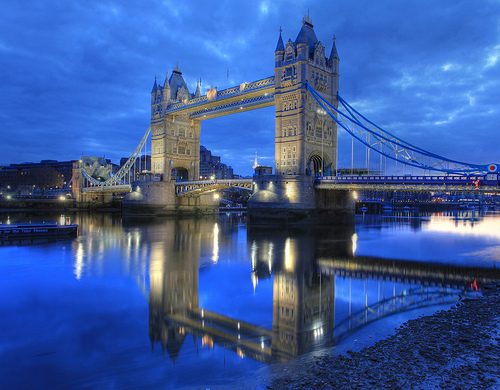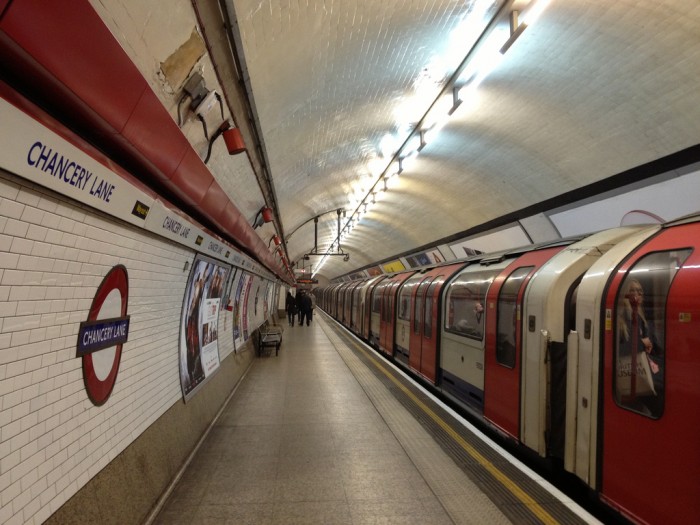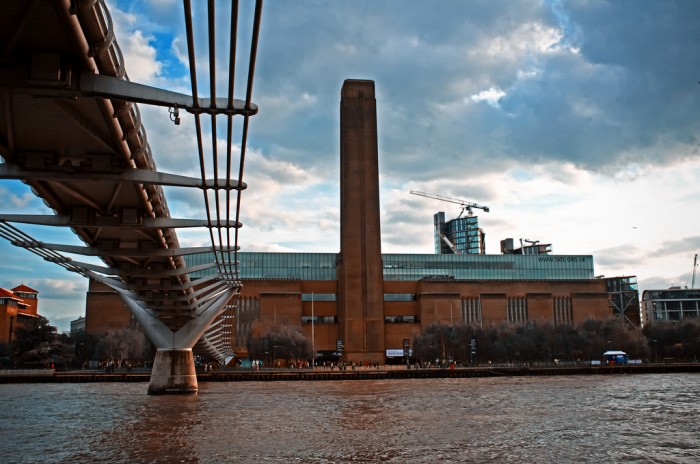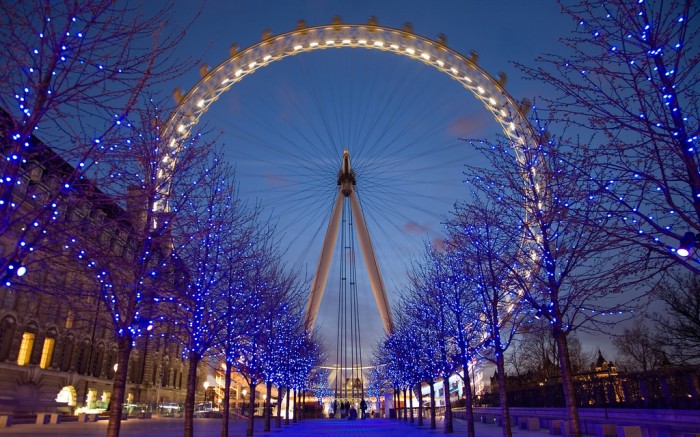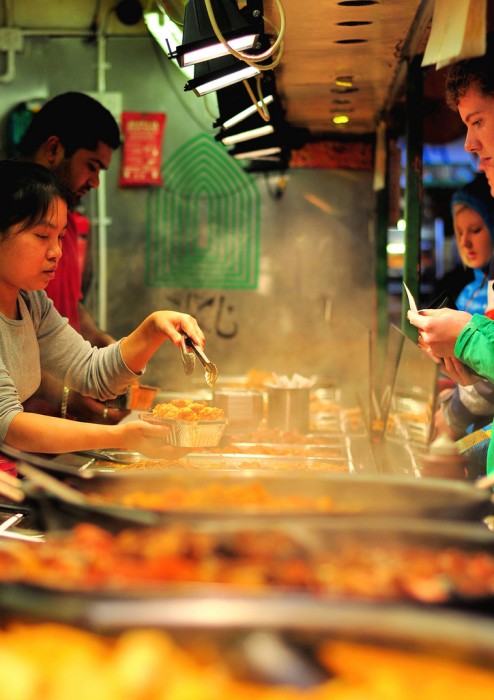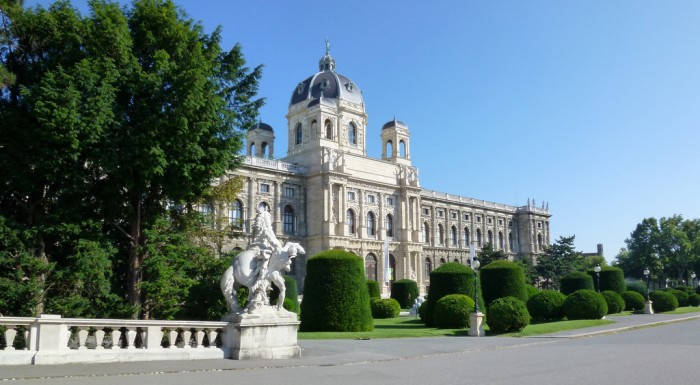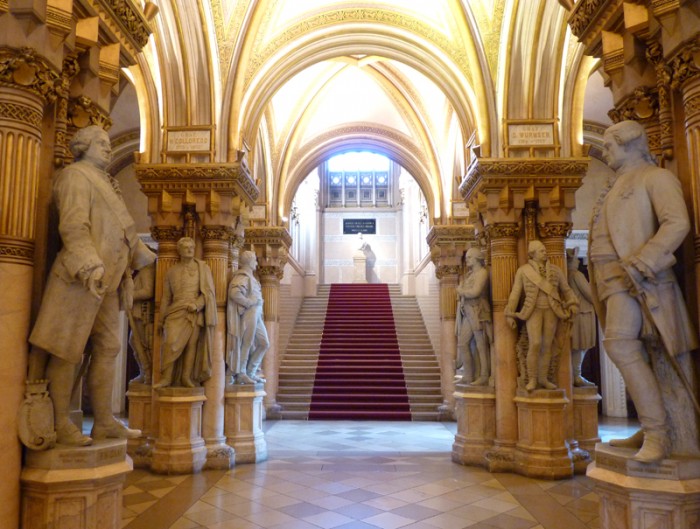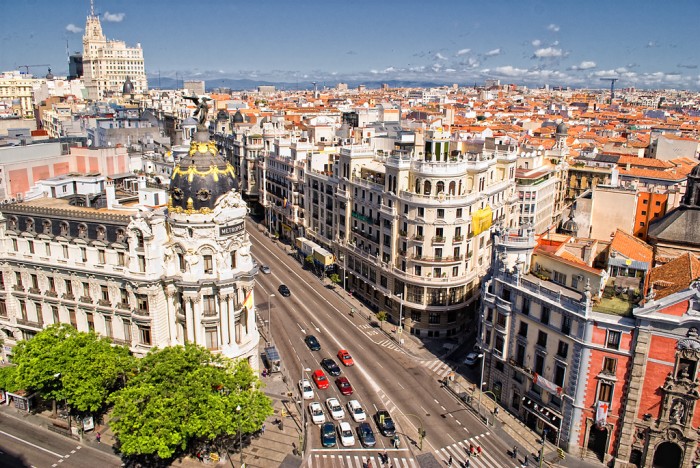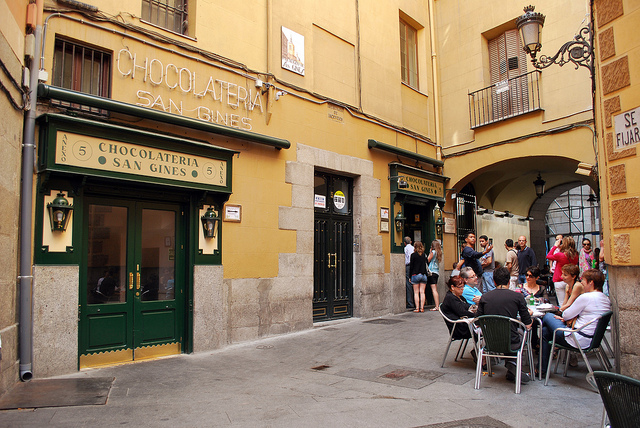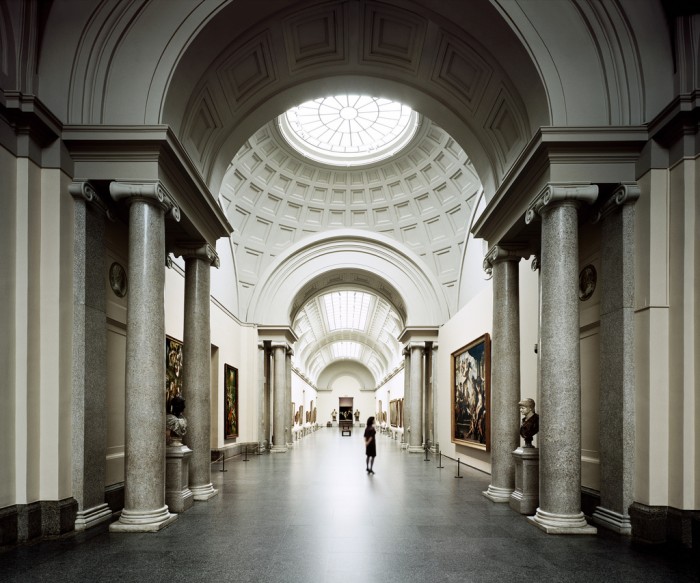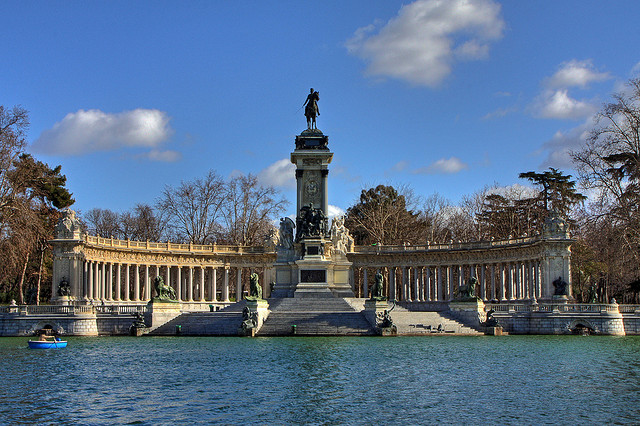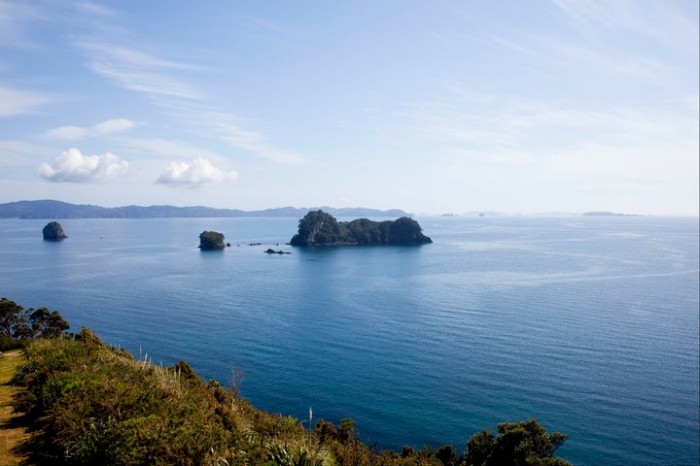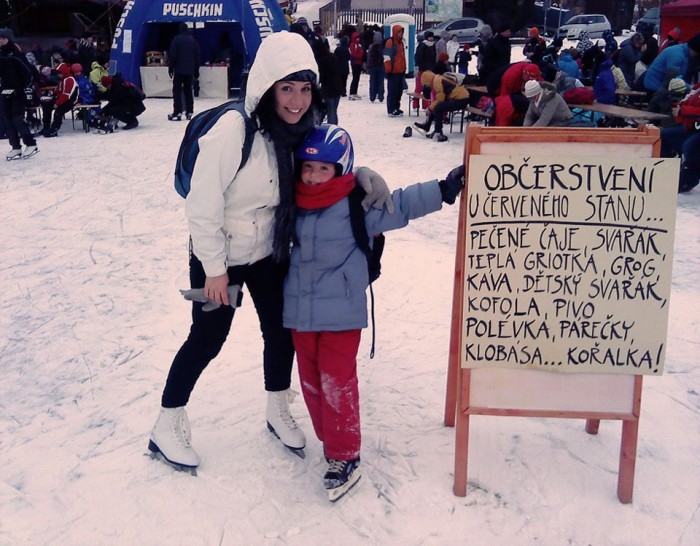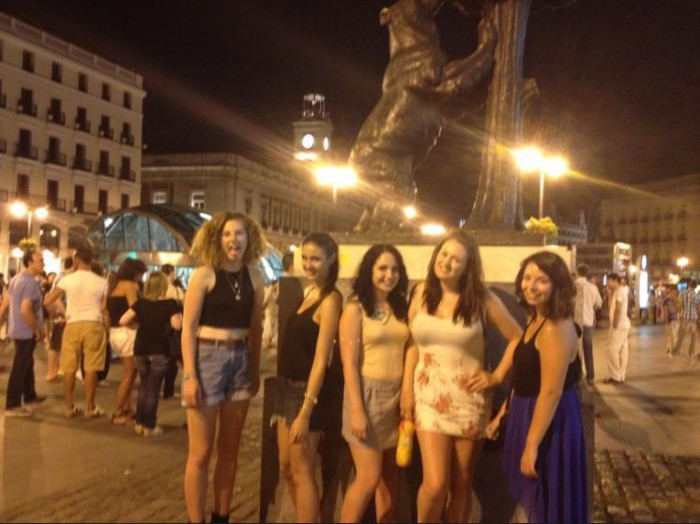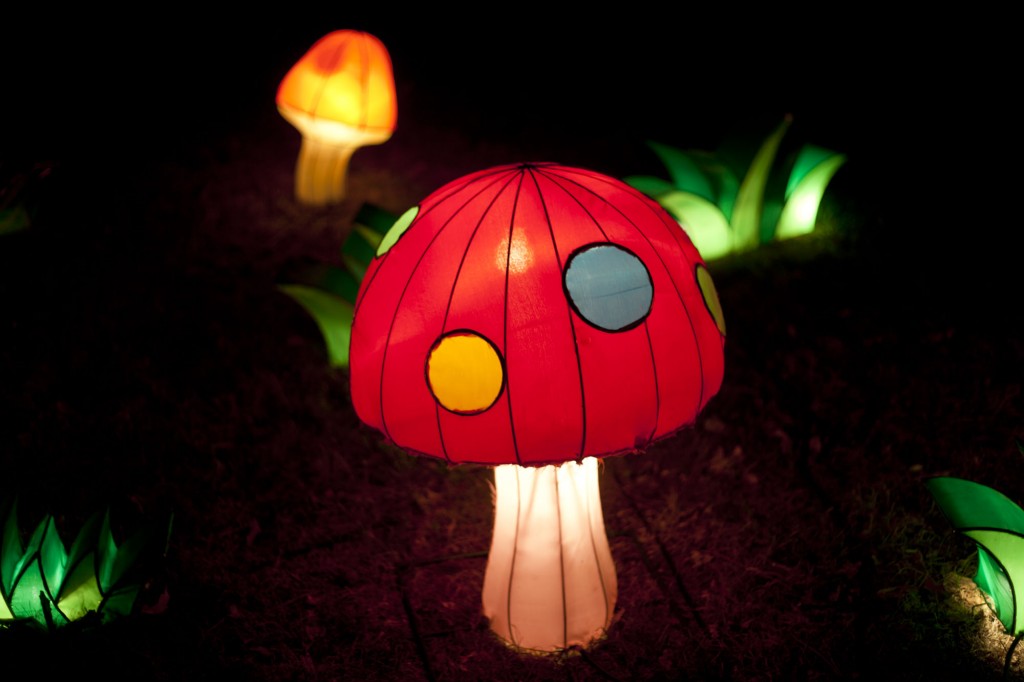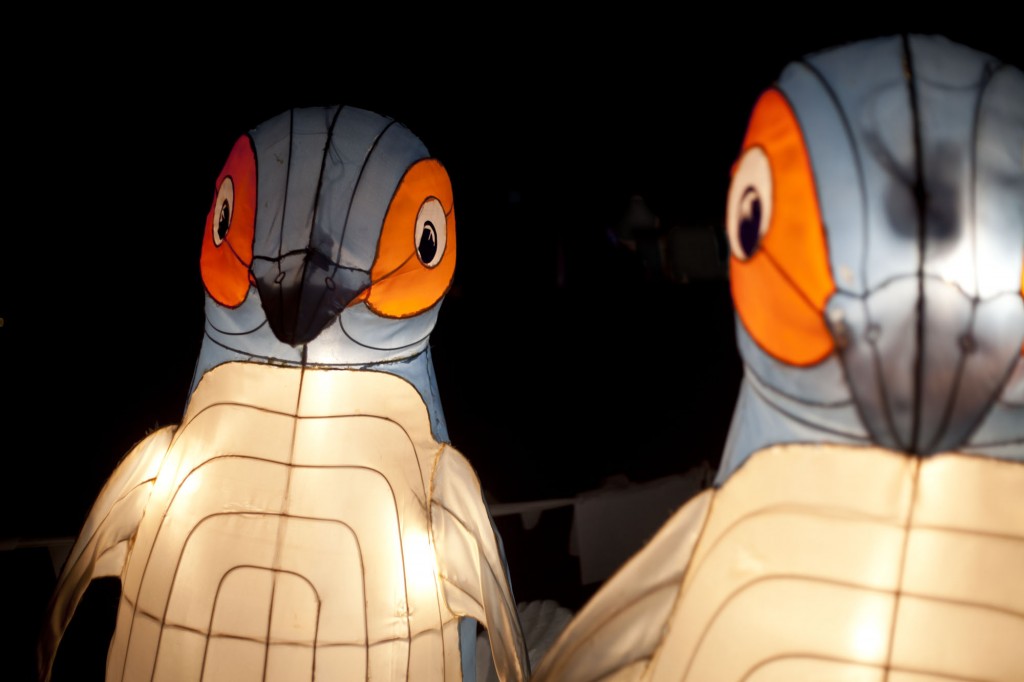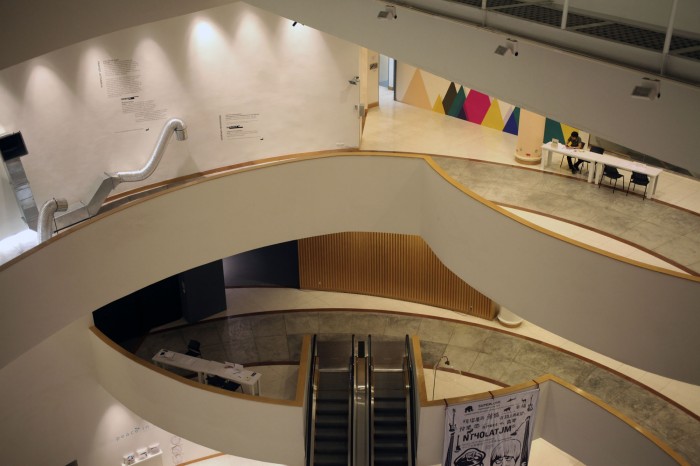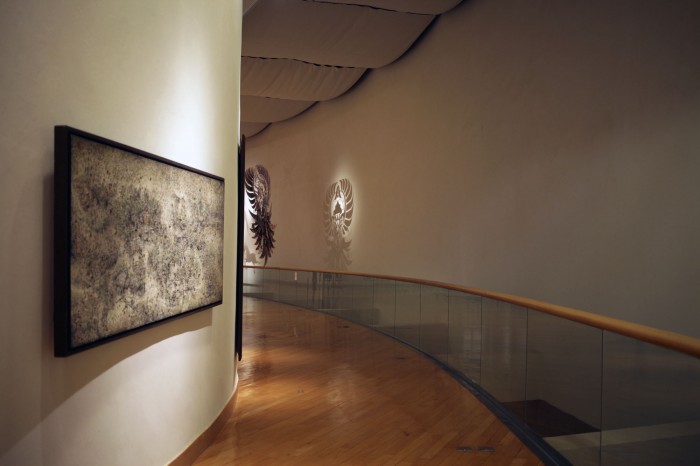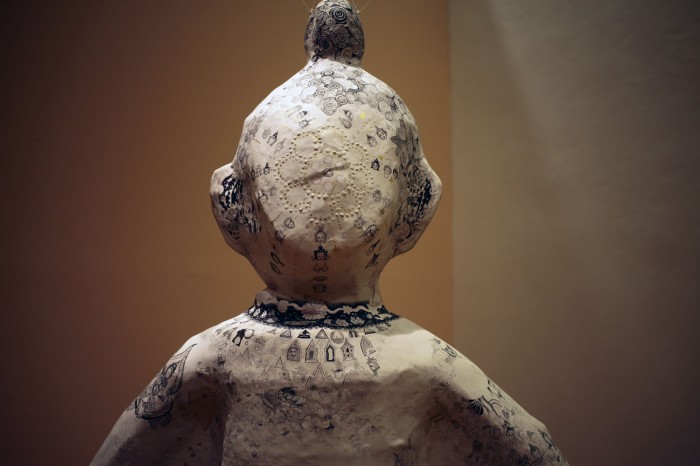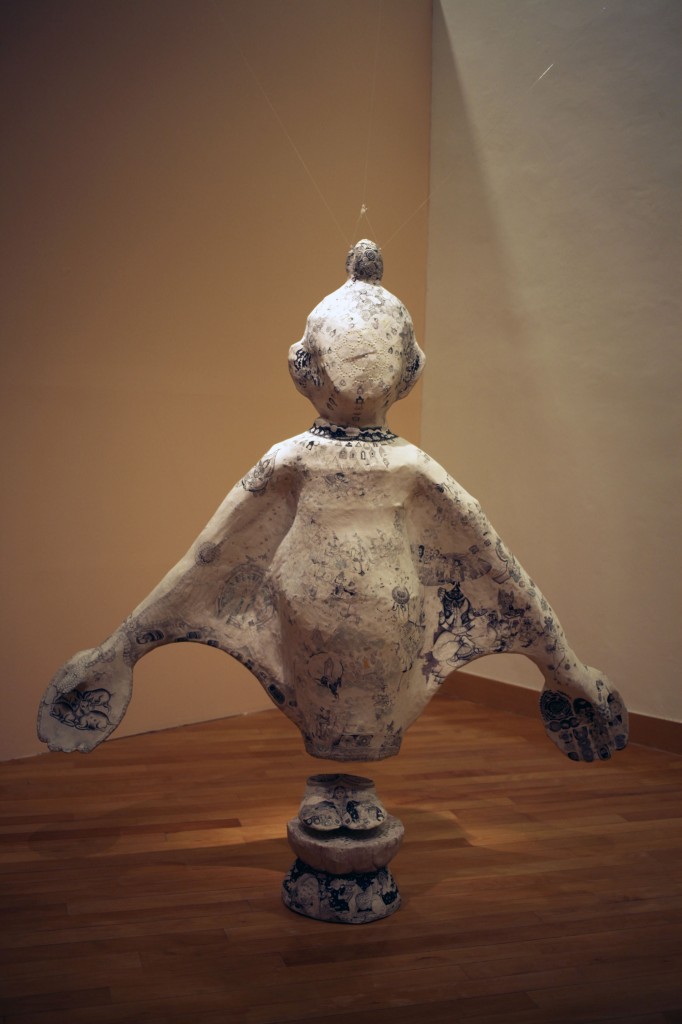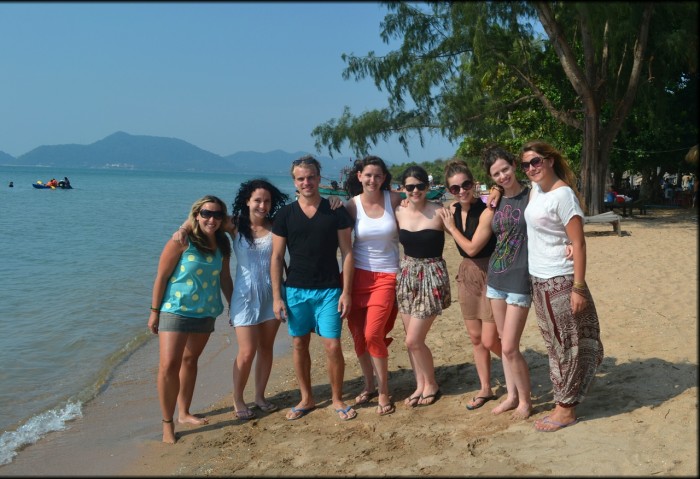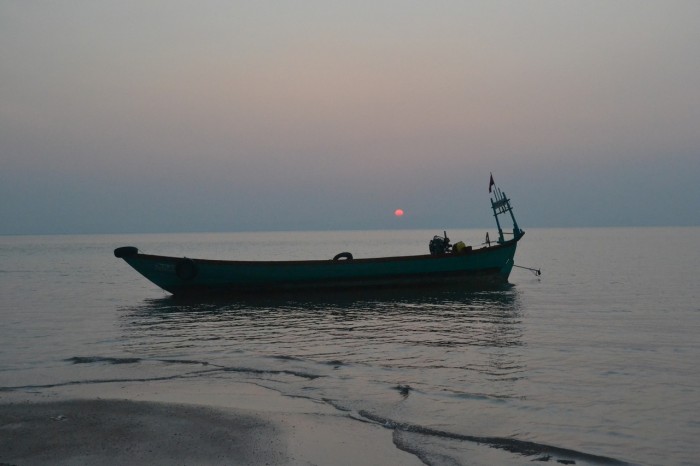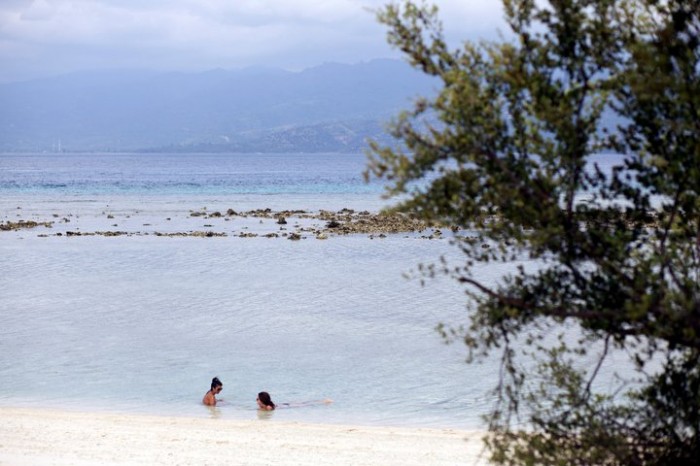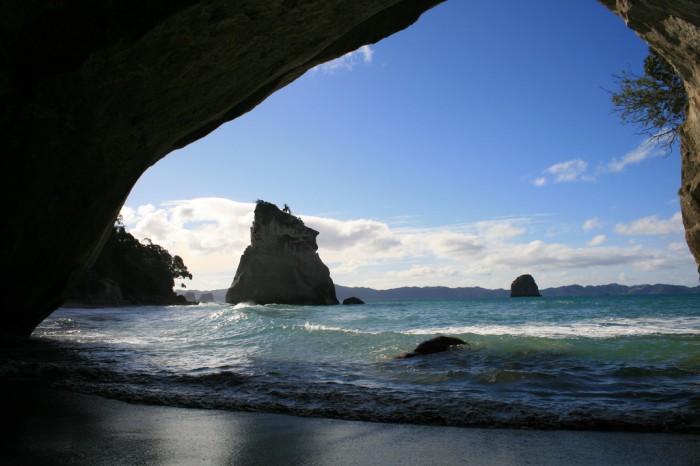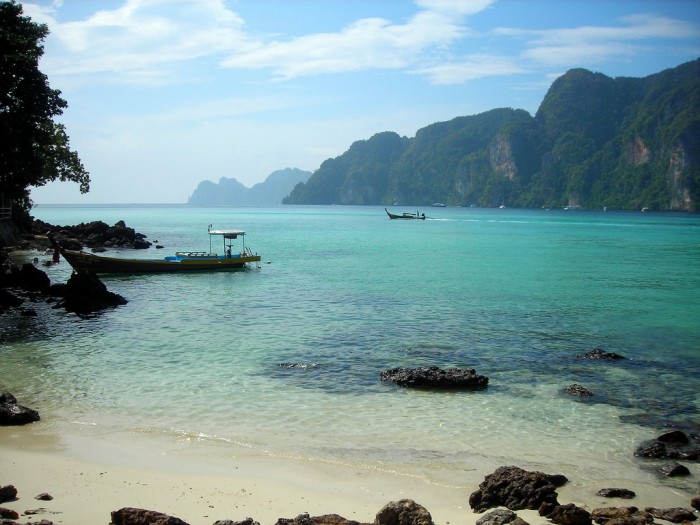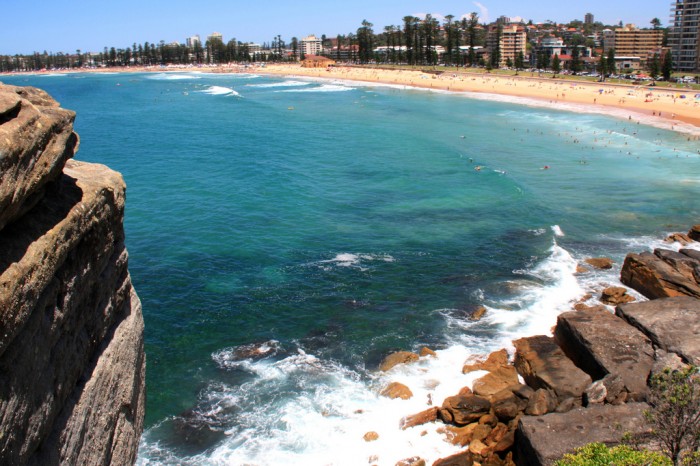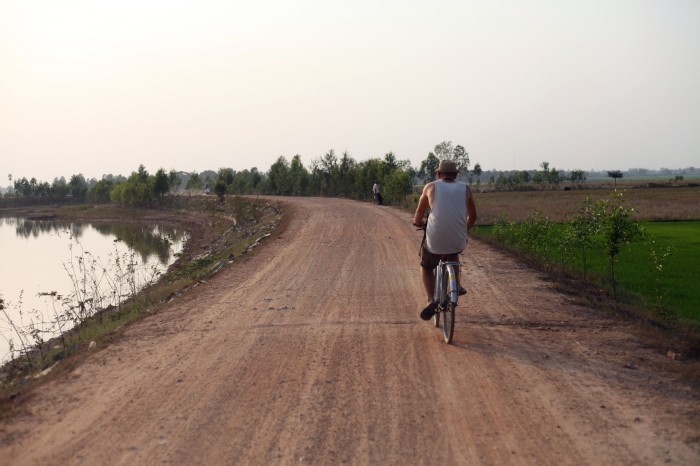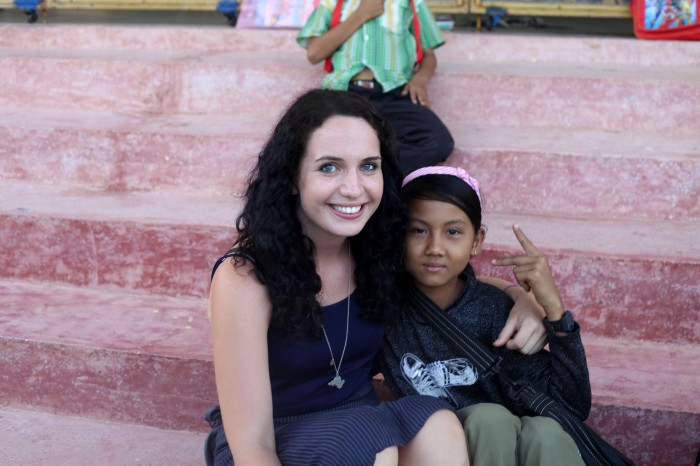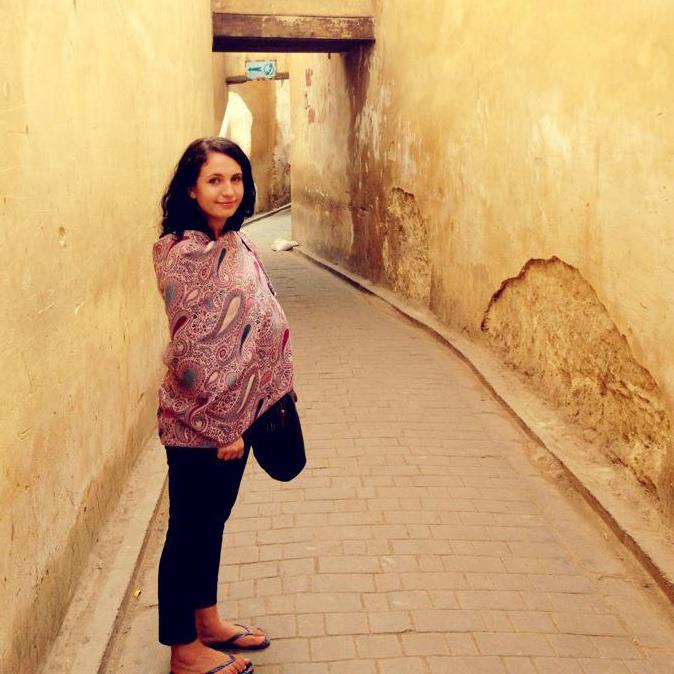London City Guide
London is the biggest international hub in England, and serves as a central port for many visitors for Europe. Coming from a commonwealth country such as New Zealand, London is often regarded with a sort of fondness that is reserved for the motherland. All in all, it is an overwhelmingly large city for any visitor that has a lot to offer. I’ve been to London twice and while I thoroughly enjoyed it I know I didn’t even peel under the surface. If you live in Europe, it’s really easy to find cheap flights to London. If you don’t live in Europe and you’re flying to Europe, chances are your flight will probably go through Heathrow, making it very easy to visit this cultural mecca.
Costs in London
Accommodation in London
London isn’t cheap: it’s known world over for expensive prices for shoe box rooms and this proves true for accommodation when you’re visiting. Hostels are likely to cost upwards of 10 pounds. If you want to stay in a private room in hostel you can expect to pay around 30 pounds for the room (so, 15 pounds each). Hotels are pricey, and if you are trying to stick to a budget it might be worth skipping them in London. Many travelers choose to Couchsurf to keep the prices down in London and there’s a great Couchsurfing community here.
Food in London
Food in London is reasonable, compared to other expenses – I was actually pleasantly surprised how cheap it was compared to New Zealand or Australia. You can traditional English “curries” for around 5 pounds and eating out isn’t too painfully expensive – expect to pay between 8 to 15 pounds for a main in an average restaurant. Most supermarkets stock cheap sandwiches for a pound or two and there are a number of bakeries scattered around that offer affordable, delicious snacks. Borough Market is an excellent place to spend a day, browsing the delicious high-end food and enjoying the free samples.
Transport in London
The London Underground was so efficient and far reaching I never bothered using a cab for my time there. I decided to get weekly passes, which make it a lot more affordable, but I found the prices to be quite expensive compared to travel in most other European cities. However, London’s huge and if you want to get around you there’s no better option than the London Underground. Investigate weekly or tourist passes to keep costs down.
Things to do in London
Tate Modern
While this is an incredible art gallery, the building itself is worth a visit. The exhibitions are always changing, so there’s always something to see here. While London literally spoils you with options for museums and galleries, Tate Modern easily ranks as one of the best attractions in all of London. It is a great place to escape when the weather turns dreary and less inspiring. The surrounding area is worth a visit and includes the Borough Markets.
London Museum
Although London is known for being expensive, one of the best things about this city is the fact that the museums are free – yes, free. While in other ciities I found myself pinching on pennies and being selective on which museums I visited, in London I felt free to indulge in as many museums as I could handle. My favourite was London Museum – again, set in an credible building that houses an abundance of artifacts and precious pieces of history. Here you’ll find the story of a city and country that has played such a significant role in the world’s history.
The London Eye
Yes, it’s for tourists – yes, it’s kind of expensive, but there’s really no better way to get a view of London than from here. Sitting in a large capsule you can look out onto the city, taking in all that this large city has to offer. If you can, plan to go here at dusk so you can watch the city transform from the chaos of the day into the charm of the night.
Kensington Gardens
This is where the Kensington palace is housed, which has been home to a number of royals in the past including the late Princess Diana. The grounds themselves are beautiful and immaculately maintained. Here you will find a number of memorials for the late Princess, including a fountain that the Queen placed in her honor in 2004.
Camden
If you’re seeking an area filled to the brim with art, culture and good cafes then Camden is a must see. Here you’ll find London’s most popular open-air markets, that hustle and bustle even during the week. Don’t pass up the food court here, as it offers intentional cuisines at irresistible prices. There’s a really laid-back vibe here, and although you’re still in London you will feel like you’ve managed to escape the big-city feel of London.
Have you been to London? What was your favourite place to explore?
Top 4 Museums in Vienna
One of the best things about visiting Vienna is the abundance of great museums that are on offer. Once you find a place to stay in Vienna, the next thing you will need to plan is where in Vienna you are going to visit. There are so many great museums in Vienna that if your time is limited you definitely wont get a chance to see all of them – so here is my list of top four museums in Vienna.
Naturhistorisches Museum:
Housed in a beautiful building, the Naturhistorisches Museum has over 30 million artifacts and will impress visitors old and new. Here you will be presented with the opportunity to walk through a number of floors that present interactive displays ranging from animals right through to the creation of the earth. This museum is perfect for escaping a rainy day, or for entertaining a whole family as there is something for everyone to love here.
Kunsthistorisches Museum:
Sitting opposite the Naturhistorisches Museum, the Kunsthistorisches Museum is housed in an equally impressive building. This museum is home to some of the finest art you will see in Europe and the sheer number of pieces can be overwhelming. While it is close to the Naturhistorisches Museum I wouldn’t suggest visiting both in the same day if you can avoid it, because each museum could easily entertain you for the better part of a day. Easily one of the best museums in all of Europe.
Schatzkammer Museum:
In English the name is “treasure chamber” and this is where Austria’s crown jewels are housed. This collection of jewels, jewelry and historic treasures dates back to the medieval times. However, many of these precious crowns were not preserved – it was an ancient traditional to melt down the old crowns to reuse the materials to construct a new crown for the new King or Queen. Despite this, there are enough gems, crowns and jewels to enchant visitors.
Heeresgeschichtliches Museum:
This is Vienna’s military history museum and is home to an assortment of military relics. This collection is impressive and dates all the way back to the medieval era. Here you can gain a unique perspective into Vienna’s history and Austria as it grew to become an empire, and its eventual fall. This museum contains a great selection of artifacts, including tanks, weapons, uniforms and a number of paintings showing a time long gone. This museum is a great insight to the former glory and breadth of the Austria Empire.
Have you been to any museums in Vienna? Which was your favorite Museum in Vienna?
Madrid City Guide
Madrid is one of my favorite cities in the world – I spent two months living there during the summer of 2012. It doesn’t matter what time of day or night; you can find something to entertain yourself. Madrid has some of the best galleries in Europe, as well as some incredible shopping streets. Despite being a large city, there are sprawling parks that are perfect for picnics downing a bottle of sangria, sunbathing or just skating around during the weekend. Madrid is the heart and soul of Spain and has so much to offer a tourist it’s almost bursting at the seams.
Costs in Madrid:
Accommodation in Madrid varies considerably depending on whether you are looking to stay in hostels or hotels in Madrid. Hostels in Madrid range between €7 and €21, depending on how modern the hostel is and the facilities it offers. Hotels in Madrid tend to start from €28 for the room – you can split this between two people making it cheaper than some hostels and can go as high as your budget stretches. Compared to other nearby European countries hotels in Madrid are relatively affordable and can provide an excellent break from staying in hostels.
Food in Madrid:
Ah, food in Madrid is delicious. It is not as cheap as in the south of Spain, but there are so many great places to eat without breaking the bank. Some of my favourite places in Madrid to eat include Mercado de San Antonio and Mercado de San Miguel – both have tapas style food where you can choose to load up your plate with different treats from lots of places. You can spend as little as €1 on a tapas, but chances are you’ll probably end up spending a lot more. You can find delicious kebabs within the city from around €3 and for the same price you’ll notice people trying to mute the heat with frozen yoghurt- it’s almost an epidemic in Madrid. Meals mid range restaurants generally start from around €10.
Drinking in Madrid:
The Spaniards love to drink – it’s no secret. Give them a glass (or bottle) of Sangria and it will be washed down quickly. A number of tapas bars around the city offer free or discounted tapas with a drink (or vice versa). Make sure you try tinto de verano and sangria – they are both equally delicious. It is very common to drink in public in Spain, although it is illegal and carries a hefty fine. When in Madrid, gather some friends (or steal some people from the hostel) and make your way to Temple de Debod to watch the sunset with a bottle of Sangria. You’ll notice that the park will be filled with Spaniards playing music, doing yoga, getting boozy and doing weird Spanish things.
Transport in Madrid:
The Metro in Madrid is amazing; even with the recent price increase it offers great value and is a really easy way to get around the city. If you’re spending a few days in Madrid and you want to cover a lot of ground, it can be a good idea to get a tourist transport card. I would only suggest this route if you think you will use the metro on average at least four times a day. You can choose 1, 2, 3, 5 or 7 day passes. For more information see Madrid’s Tourist Season Ticket prices. There is a great network of night buses, so when the metro closes public transport is working throughout the night. Taxis are relatively affordable, costing around €1,30 per km.
Things to do in Madrid
Head to Sol and Walk to Gran Via:
If you love shopping, you’ll love Madrid. It has almost every single store you could dream of in one central location and prices seem to be a lot cheaper than elsewhere in Europe, especially if you visit during July through to August as this is when everything goes on sale. Walking from Sol down through Gran Via and onto Tribunal is a great way to see and assortment of shops and buskers all while soaking in the real Madrid.
Visit Museo de Prado:
Without a doubt one of the best fine art museums in all of Europe, the Museo de Prado almost always has a long queue – for good reason though. Within this museum is contained a large collection of pre 20th century European art, including a great number of Spanish pieces. This is the most popular tourist attraction in all of Spain and offers a free visiting slot each day – line up early if you want to make it in before closing.
Check out Tribunal:
Probably my favourite area in Madrid; it houses boutique stores, vintage shops, tattoo studios, little coffee shops, cupcake parlours and even a vintage café. There’s an abundance of really cool street art and it just feels really alive. It’s a great place to base yourself during your stay in Madrid as you can easily walk to most places.
Eat Churros:
Yes, churros. Delicious, long almost pastries that are dipped in chocolate so thick you could almost stand the churro up in it – this is my idea of perfection. My favourite chocolatier was San Ginés – open until some ridiculous hour of the morning. I once visited at 5am after a night of drinking and was surprised the chocolatier was packed and filled with people of all ages!
Enjoy Parque de Retiro:
Unfortunately Madrid is very far from the beach, making it harder to make the most of the relentless summer heat. Retiro is Madrid’s answer to the beach and locals flock here during the summer months to sunbathe, roller blade, boat around the river and just to enjoy each other’s company. The grounds are immaculately kept and it’s one of the most beautiful public gardens I’ve visited – the best part is it’s very central, easily within walking distance from Sol.
Have you visited Madrid? What did you think was essential?
The Problem is you Think You Have Time
The problem is you think you have time – Buddha [Tweet this]
I read this quote yesterday and it’s spent the last twenty four hours resonating within me. We all think we have time. We can go on that trip next year, we can tell that person we love them tomorrow, or maybe we can quit our jobs we don’t love and start doing what we do love… some day. We’ve got time, there’s no rush.
If you’ve been dreaming of Ha Long Bay, or visiting the Plitvice Lakes, or seeing the best of Bangkok, then you need to start working towards it. For most people, especially those that read this blog, travel is a priority – but often there’s something getting in the way, something holding you back.
I meet so many people who tell me I am so lucky to have traveled and how much they wish they could do it too. The truth is, luck had nothing to do with it – long term travel is cheap and if you come from a first world country then there are barely any barriers preventing you from exploring the world, except for the trickiest barrier of all: you.
How would you be spending your days if you knew you were running out of time? Would that change anything for you?
If my clock was up, I’d have a few travel regrets, but most of all I’d be sad I hadn’t seen more of my own country. People travel to the end of the earth to see New Zealand, and I’m embarrassed there are big gaps in where I’ve been. Part of the reason I haven’t spent more time exploring New Zealand is because it’s, quite simply, more expensive than most other places I could visit. The other reason is because I feel like I have forever to do it, there’s no rush, I’ll get around to it someday.
But the truth is, time isn’t promised to you. There’s no guarantees, no number of years allotted to you.
I’m taking New Zealand off the backburner, and my goal is to explore my own country through the eyes of a tourist.
So, the problem is you think you have time – what would you do if today was your last day?
And where should I go first?
What’s it like to Au Pair?
I was an au pair in two countries – Spain and the Czech Republic. There were a number of reasons why I decided to au pair, but one of the main reasons (if I’m honest) is that I was running out of money but didn’t want to stop traveling.
I had two completely different experiences in the countries and although I can’t see myself being an au pair again I loved both experiences because I learned a lot and got to do a great deal of travel.
Being an au pair in the Czech Republic:
I ended up choosing a small town called Pocatky which was about 1.5 hours away from Prague. I always wanted to go to Prague – I remember I once saw a photo of Charles’ Bridge and immediately fell in love and decided that one day I would visit Prague. I was set to be teaching English in Seoul, South Korea and when my contract finally came through I freaked out and decided that I wanted to see more of Europe. I joined an au pair website and started searching for families in Prague. I ended up finding a few families that I was interested in, but ended up skyping with the host mother of the family I ended up choosing.
As I later learned when I was an au pair in Spain, it’s much more important that you choose a family you like (and host “parents”) because that will make your time much more enjoyable. My family in the Czech republic were great; I’ve visited them since, still keep in touch regularly and miss them immensely. I had a lot of fun, got to explore a lot of the Czech Republic and surrounding European countries.
I ended up in a really casual arrangement with my family – the boys I looked after were home schooled in the mornings and would spend most of the afternoons with me. I could take long weekends when I wanted to travel (amazing) and took on teaching some of the host mother’s English classes which was a great way to earn a little extra cash and gain some great experience. I was originally supposed to be with this family for three months, but had such a great time I extended it to six.
Being an au pair in Spain:
After living so far away from a city when I was in Pocatky, I had decided I wanted more of a central experience in Spain so chose to be close to Madrid. This was only a summer position and I was with the girls in the mornings and had the afternoons free. The host family gave me a monthly metro pass as well as an allowance and it was a great base to explore Spain – a highlight of which was the Alhambra – and to learn a little more Spanish.
This experience was slightly more challenging as only one of the two girls really spoke much English, so there was a bit of a language barrier. However, it was also really cool to see how much of an impact I had on their English and to see the younger girl experimenting a little more with the language.
Spanish families are quite different to those in New Zealand – just because you have kids doesn’t mean you slow down – it was not uncommon to see parents towing around small children to ice cream parlors at 11pm at night. I also managed to find a great group of girls who were au pairs here and we had a pretty awesome social life together – it was heaps of fun.
Why be an Au Pair?
I probably wouldn’t au pair again, just because I’m a bit older and like the idea of being slightly more independent in my travels. However, it’s a very easy way to get set up in a new country and can be incredible social, too. Depending on your family you will get to see a new side to a culture that would otherwise be difficult to be invited into. It’s pretty cool knowing you can move somewhere, have a room, have food, have some money and the opportunity to easily explore another part of the world. Depending on your language goals, being an au pair can be a great way to get extra exposure to the language you want to learn.
If I ever have children of my own I know that I’ll have an au pair, because it’s a great experience for them too – I noticed that children who had au pairs were a lot more confident, their language skills were better than average and it’s just a great way for them to gain an “older sibling”.
Has anyone else been an au pair? If so, what were your experiences like?
Chinese Lantern Festival
I’m chilling out in my hometown for a while. It’s easy to take home for granted, after all I spent the first 22 years of my life here before venturing off to bigger and better places. But the truth is, Chrstchurch is one of the best basis to plant yourself in if you want to explore more of New Zealand – which is exactly what I’m planning to do. Tomorrow I head up to Auckland and then I’m off to Mount Maunganui to enjoy some sun, surf and sand before summer fades into the distance.
This Sunday I bundled up warm and headed to the Chinese Lantern Festival. I still have a child-like fondness for anything that glows or sparkles. This was also the perfect excuse to get back into using my camera, because since it was stolen I’ve lost my groove.
Where have you seen the best lanterns before? I thought these were pretty awesome!
Best of Bangkok
I’ve been to Bangkok at least 10 times, often just when passing through as a port to somewhere else. It’s one of the transport hubs in Asia and a great place to find cheap flights in and out of. While there’s a novelty to Khao San Road and the Chatuchak markets are incredible, my favourite place in all of Bangkok is the Bangkok Art and Culture Center.
Here you’ll see exhibitions from new and established artists, predominantly from Thailand. It’s a great snippet into the world of modern Asian art, but the building itself is absolutely incredible. Best of all? It’s completely free and often has interactive exhibitions. In the past I’ve participated in a free pottery making class and jumped in a room filled of string – it’s pretty great.
Definitely worth checking out the next time you’re in Bangkok. Where’s your favourite place in Bangkok?
It’s Just Not Fiji
When you travel you are exposed to a great variety of people all experiencing entirely different trips. Some people go away for short breaks, some for longer adventures and some people seem to have traveled forever. It’s always interesting talking to people about where they’ve been, their favourite places and where they are heading next.
For my 25th birthday a group of volunteers from New Futures Organization and I piled into a mini van and headed south towards Kep. Two years earlier I’d spent a weekend on this little island and had a great time, so it seemed like the perfect weekend escape from Takeo, in rural Cambodia.
It’s a very basic island, with a few huts, bucket showers and bucket toilets. I warned everyone that it would be really simple and that there wasn’t much development on this island. There are a handful of restaurants on the beach serving simple but delicious seafood. In all honesty there’s not a lot to do there, but that’s part of the fun. Our days were spent alternating between laying on the beach, getting massages, enjoying the local seafood, lounging in a hammock and swimming with the glowing plankton. To say it was relaxing was a complete understatement.
The island is beautiful, but the sand isn’t white – it’s more of a browny golden colour. In true Cambodian fashion there’s a little bit of rubbish lying around, but I wouldn’t call it dirty. The main strip of sand is maybe a twenty-minute walk, so it’s small. There’s only electricity for three hours a day.
Of the 10 of us who went to Rabbit Island for the weekend, two people were unhappy. One was a slightly older lady who simply wanted her creature comforts, which was understandable. But the other girl was my age and was absolutely miserable on this island.
Sorely disappointed with this island, she exclaimed, “It’s just not Fiji” and then proceeded to hold her hand high and say “Fiji’s here” before lowering her hand dramatically and gesturing “Rabbit Island’s here”.
Somehow she’d managed to let slip the fact that we were here, on Rabbit Island.
It wasn’t Fiji, and really that was part of the charm of this island. It was only a two-hour drive and 20-minute boat ride away from rural Cambodia where we had been volunteering. Meals were cheap: ranging from $1 up to $7. Accommodation was a whopping $2.50 a night.
In the past I’ve been to numerous beaches that I’d rate more highly than Rabbit Island, including my top five favorite beaches, but my favoritism of these other beaches didn’t impair my ability to enjoy a weekend away on an island with friends. I arrived with a clean slate, open mind and was excited about what the weekend would hold.
This girl, on the other hand, arrived directly comparing it to a beach literally half a world away. Because Rabbit Island fell short of her expectations and her experiences, she couldn’t let herself enjoy it and instead was mopey. The two women who didn’t like Rabbit Island promptly left and went to Kep, before leaving early and returning to Takeo.
Those of us who stayed had an incredible weekend and it really felt like I was on holiday after volunteering for a month in Cambodia.
I’ve met a lot of people on the road who get so focused around finding the best beach, or the most beautiful temple that they cannot enjoy the beauty of the place they’re in. I’ve written about how important it is to live in the now and to really focus on what you have around you. Sometimes people who travel too much become spoiled and jaded.
I think it’s such a shame to let your adoration of somewhere else impair your ability to enjoy a perfectly wonderful place in the moment.
My Top 5 Beaches
I love the beach! Last weekend I spent my 25th birthday on Rabbit island, a small island off the coast of Cambodia. It’s certainly not my favourite beach in the world, but nothing really compares to the way in which a beach can unwind you. Our days were spent alternating between sunbathing, eating delicious, fresh seafood, taking massages on the beach and swimming with the glowing plankton at night – all in all it was a wonderful way to ring in my new age.
As I’m heading home, I’m longing for some of my favourite beaches around the world so thought I’d share some of my favourites with you.
Gili T, Indonesia
My idea of paradise, this small island is easily walkable within an hour or two. This island is coated in bright white sand, crystal clear water and has a really slow island pace. Although there’s not a lot to do here except sunbathing, snorkeling and diving, it seems to be enough to fill a solid week of beach action. You can take day trips to the smaller two Gili islands, or stay overnight if you’re looking for even more serenity. Gili Trawangan is affordable paradise and somewhere I’d love to revisit… as soon as possible.

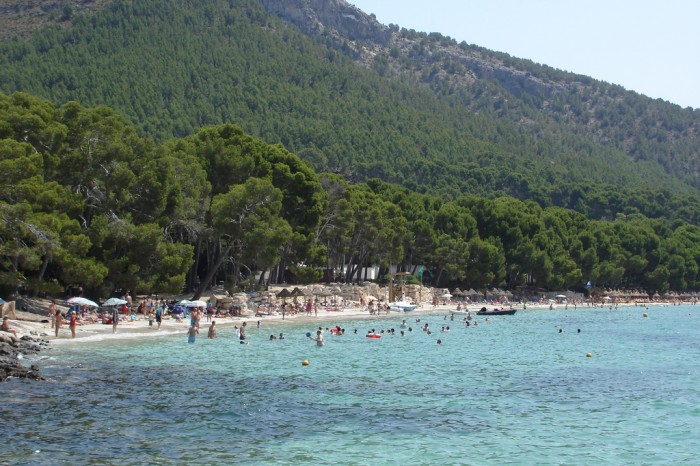
Majorca, Spain
This small island just off the East coast of Spain is the perfect place for relaxing family vacation or romantic getaway. The golden sand and year long sunshine make this an irresistible place to visit. You can choose to visit independently or choose to organize cheap holidays in Majorca, allowing you to focus on soaking up the sunshine instead of spending your time planning. While the beaches of Majorca are a real highlight to visiting this island, there’s a number of great activities to do for people of all ages to break up your holiday. From water sports to a marine life center, you’ll be easily able to keep family members of all ages entertained. Snap up great holiday offers quickly so that you can secure your summer escape!
Cathedral Cove, New Zealand
Yes, New Zealand is gorgeous and as my home country it’s often left of my list of favourite places because to me it’s just the “default country”. I love the beaches around Hahei and Cathedral Cove, because they’re beautiful, serene and relatively quiet. That’s the great thing about New Zealand, is that it’s so easy to take some space out from other people and actually enjoy a place to yourself in solitude. Cathedral Cove is very famous because of the sandstone arch that separates the two beaches here, it is quite a striking natural formation.
Koh Phi Phi, Thailand
Yes, it’s touristy, really touristy. But sometimes I think things are touristy for good reason. Koh Phi Phi is the first place I really fell in love with on my first solo adventure and I was so happy to finally return two years later. This time around I did a booze cruise (don’t judge me) to some of the smaller islands, including Maya Bay and the whole area is just stunning; it’s the epitome of paradise. Koh Phi Phi is overly commercial, filled with a number of drunken tourists, but the view point at the top of the island make all of that worthwhile – it’s simply stunning.
Manly, Sydney, Australia
This was the first beach I ever visited outside of New Zealand and while it isn’t the most striking beach I’ve ever seen, it’s a gorgeous ferry ride away from Central Sydney. Manly itself has a very laid back small town feel to it, and is the perfect place to relax and detox from the chaos that is Sydney. No trip to Sydney is complete without at least a day trip to Manly and an obligatory meal of fish and chips on the beach.
Beaches are one of the highlights of any trip for me. Where has your favourite beach been so far? I need some more inspiration for holiday planning!
Volunteering in Cambodia
I’ve written before about volunteering in Cambodia, but I wanted to talk a little more about what exactly I’m doing on this trip here. I’m based at New Futures Organization in Takeo, Cambodia and am currently volunteering as a teacher with a class of about 20 students.
The school is called Little Po and is located in a really rural village that is hovering around the poverty level. This village school was originally established four years ago to give the children a starting point in the English language and to also to give them a little break from their challenging lives. There is one class of 200 students, with one teacher called Team who is nothing short of amazing. He is constantly bursting with energy and has mastered some pretty impressive tricks to keep the children in line, despite being heavily out numbered.
My class are beyond charming – whenever I go away from a break mid way through the afternoon, I’ll return to sweet messages on the back of the whiteboard. The school was set up to offer English classes to children who would otherwise go without education and instead be working all day in the fields. Volunteers come by to supplement Team’s teaching and to take the more advanced students away so they can get authentic exposure to the English language.
The bike ride out to Little Po is incredible – fiery red roads, bright green rice paddy fields and stray cows and pigs wandering the streets. As you enter the town children run out to the road to give you high fives as you cycle past and while shouting “hello” sometimes even the adults get involved and enthusiastically welcome you to their village. Often my students bring their younger siblings along to class because there’s simply no one else available to look after them.
Life is different here; and that’s part of the reason I’ve fallen in love with this provence within Cambodia. Their happiness is not bound to the latest smartphone, a new car or buying new clothes – in fact, many kids only have one outfit. Sometimes kids will just wear their pajamas as clothes because it’s simply all they have. Their priorities are different; focused around family and simply having enough to get by.
The surprising thing though, is whatever the kids have they’re more than happy to share with you. They’ll muster together their pocket money and buy volunteers small candies or stickers as a token of their affection. These kids who really have nothing, give all they can and it’s beyond humbling.
This is the place I come to reset myself, to align myself. Sometimes it’s easy to get caught up in the every day rat race or working towards buying something or getting somewhere, so that you can finally be happy. These children in Takeo have taught me, and continue to reteach me, that I already have absolutely everything I need to be happy – I have my health, my family and my friends.
Each day the children sing a number of songs to welcome us volunteer teachers – before and after each break they sing us a “Thank You” song to show their gratitude. I’m not really sure how I can thank them for all they’ve taught me, but I guess coming back time and time again says enough.
I’m home in just over two weeks – time is coming around fast, but in between I’ll be visiting Rabbit Island, Phnom Penh and heading back to Singapore. I know it’s going to fly by, so I’m trying to savor every day and every moment here.

